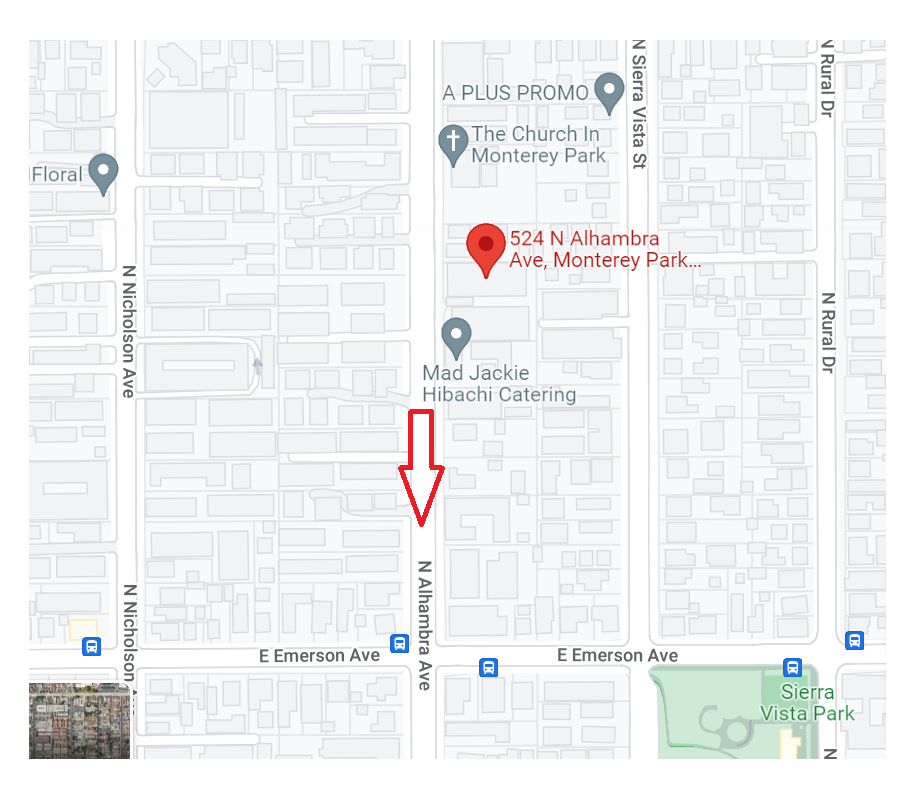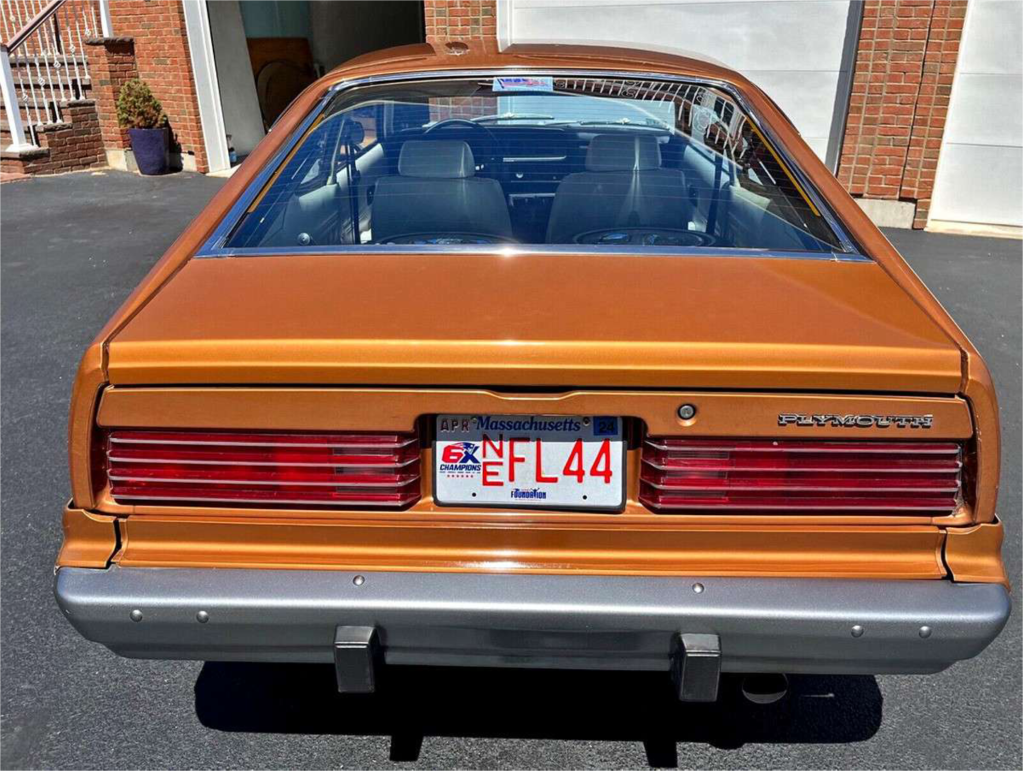The Yu incident does not match any of the other Night Stalker attacks. Before the killer’s moniker had been coined, he was also the ‘Valley Intruder’, the ‘Valley Invader’, or the ‘Walk-in-Killer. Only, in this incident, nobody walked in, invaded or intruded anywhere. This shooting happened in the middle of a road; there was no burglary, no rape, no slashing, no bludgeoning, no satanism and no Avia shoes. However, detectives had linked it to the other murders, just because it occurred on the same night as another – Dayle Okazaki, almost 4 miles southeast. Yu’s murder was formally linked to the Night Stalker around August 1985.
This description of the murder comes from two men people who were in the street at the time: Joseph Dueñas, Jorge Gallegos (sometimes Jorge Calderon, so we will call him Gallegos Calderon here for clarity) and his girlfriend who never testified. There were others, but they were never asked to testify in court. Further details will be given in our book.
Joseph Dueñas
Joseph Dueñas’ initial police report is not available but from the Federal Habeas Corpus, we know that between 11:15 and 11:30pm, he heard a woman scream up to seven times. He went to his balcony where he witnessed a blue car and a yellow car in the middle of the road. He saw a man and a woman tussling; the woman was holding onto the man’s arm or jacket. He said, “get away from me,” then returned to the car and drove away. The woman, Tsai-Lian Yu, fell to the ground and crawled in the direction of Dueñas’ apartment. He called the police and, with some other neighbours and the second witness, Jorge Gallegos Calderon, he went to help Yu.
Dueñas said the killer was either “oriental” with “slanted eyes” but that he could have been “Mexican.” He was about 5’7″ or 5’8″ and wore jeans, a T-shirt and a jacket, colours not specified. He was slim with shaggy long hair but other than this, Dueñas said he was unable to positively identify the suspect.
Dueñas Recants
At the preliminary hearing in March 1986, Joseph Dueñas identified Richard Ramirez at Tsai-Lian Yu’s killer. However, four days later, he recanted under cross-examination by Ramirez’s defence attorneys. He was asked to look at Ramirez again, stared intensely and eventually said, “No.” At trial in 1989, Dueñas maintained that he could not identify the killer.
Jorge Gallegos Calderon
Below is Jorge Gallegos Calderon’s initial police statement taken by Detective Corrigan of Monterey Park Police Department at 2:30am on 18th March 1985. The interview was conducted in Spanish, for Jorge could not speak good English.

Gallegos Calderon said that he was parked in his truck facing south. He was talking to his girlfriend Edith Alcaaz, who was the cousin of Joseph Dueñas. Gallegos Calderon saw a dark blue car drive past, travelling south down North Alhambra Avenue and onto East Emerson Avenue. He did not see which way it turned. The headlights were off.

Gallegos Caldelron only observed the driver from behind and noted his dark hair. He said he could not be sure if the suspect was “Oriental” or Latino. He exited the van and ran towards Yu who was squatted with her right leg extended forwards. She was dragging herself backwards before falling onto her side. She was saying, “help me.”
Gallegos Calderon: Changing the Story
At the preliminary hearing in 1986, Jorge Gallegos Calderon embellished his original story and claimed to have seen the tussle between Tsai-Lian Yu and her murderer. Even the prosecutor, Philip Halpin, was surprised by this: the witness was only supposed to testify what he saw, not who he saw. Strangely, Gallegos Calderon forgot to tell Detective Corrigan that he saw the tussle on the night of the murder.
“Gallegos saw the man from the blue car lean into the window of the yellow car and try to pull the woman from her car. Gallegos thought they were having a lovers’ quarrel. He did not hear any shots.”
– Petition, pg. 50
Gallegos Calderon now said he observed the gunman in profile and saw his whole body and even his clothing. The killer was allegedly wearing light blue pants and a light blue shirt. And he also had curly hair. Gallegos Calderon was asked if the killer was in the courtroom. He confirmed that he was and identified Richard Ramirez. When questioned about the suspect’s height, Gallegos Calderon said “about my height: 5’8”. Richard Ramirez was 6’1″ (from ‘Ramirez Identified as Woman’s Assailant,’ News-Pilot, 18th March 1985).
Gallegos Calderon at Trial
On the night of the murder, he was also interviewed by Officer Dan Romero and also neglected to report that he saw the fight between victim and killer. This was blamed on Romero for conducting the interview in English when Gallegos Calderon, a recent immigrant, struggled with the language. Yet Detective Corrigan had interviewed him in Spanish and the fight was still not mentioned. A third police officer, Anthony Romero, had gone over the statement with Gallegos Calderon who told him he had no more information to add. The witness was blatantly lying on the stand.
Gallegos Calderon had not been called to the 5th September 1985 line-up, so had not identified Ramirez until the March 1986 preliminary hearing. The failure to call him was also blamed on Detective Dan Romero – who was a defence witness. Romero testified that this was because Gallegos Calderon told him he would be unable to positively identify the killer.
At trial, Gallegos Calderon was again asked to identify Ramirez in the courtroom – ridiculous because it is always obvious who the defendant is, especially as Ramirez was visibly chained. He said that Ramirez looked different to the last time he saw him (his hair was longer and he wore dark glasses in court). This should not have been a problem. Gallegos Calderon had decided in 1986 that the killer had shaggy or curly hair. Ramirez’s hair length at trial was immaterial. He should have had a clear description of him on the night of Yu’s murder – he originally only said the man had dark hair.
Ramirez had useless defence lawyers who should have questioned Jorge Gallegos Calderon over the fact his story now matched that of Joseph Dueñas. They should have accused them of comparing statements and copying each other. Perhaps Gallegos Calderon was desperate to participate in a high profile court case so lied about seeing it all – and Ramirez – yet slipped up over the short height of the suspect. Ramirez was asked both to stand to demonstrate his height and to remove his sunglasses, but he refused. Prosecutor Halpin argued in bad faith that this implied Ramirez’s guilt which violated due process.
“You might conclude from that that he didn’t want to give Mr Gallegos any more opportunity to identify him than was necessary. I think that is a reasonable conclusion.“
– Philip Halpin from the Petition, pg. 423.
This is ludicrous: everybody knew that Ramirez was tall and what his eyes were like. The eyes were irrelevant: in the dark, viewing from a mirror at some distance, Gallegos Calderon would not have been able to see the suspect’s eyes.
While the two men corroborate the suspect being short and possibly Asian, they differ in their observation of the killer’s clothing and hair. Moreover, we now know that Jorge Gallegos Calderon added more to the story at the preliminary hearing. The original information he gave should not have been enough to convict Richard Ramirez. Add to this the fact the other witness, Joseph Dueñas, recanted his identification, the Tsai-Lian Yu murder should not have made it to trial. The defence should have demanded this be thrown out and Gallegos Calderon should have been impeached. Richard Ramirez was known for wearing dark clothes, so, if he was indeed wearing light blue, then it was not the man seen at the Okazaki killing. It certainly was not the “man in black” that Detective Carrillo claimed was terrorizing L.A. County.
The following is curious. Richard had short hair in 1985. Joseph Dueñas said the suspect had light, long and shaggy hair. Then Gallegos Calderon later claimed his hair was wavy. By the time of the 1986 hearing, Richard did have long shaggy hair, even longer by the 1989 trial. So, why was Gallegos Calderon bothered that his hair was “a little different”? Surely Ramirez’s longer hair is a closer match to the original suspect than his 1985 hair? This is strong evidence that the witnesses were influenced by the bushy-haired man sitting at the defence bench rather than the short-haired man who had been shown in the papers – which both men admitted to seeing.


The Car Conundrum
Jorge Gallegos Calderon thought he saw the suspect driving a 1978/1979 Plymouth Arrow with a squared-off back end, like a hatchback (like the orange car below). He did not identify this car independently – rather, he picked it out of a selection of police photographs. He believed the licence plate read 521 MCD or NCD. Joseph Dueñas saw a Ford Escort.



The prosecution attempted to tie a car stolen from Downtown Los Angeles and abandoned near Monterey Park Hospital to the murder because the first three digits of the licence plate were 521. That car, a 1974 Toyota Corolla station wagon, belonged to Teresa Cerna and the plate read 521 MNI. As you can see, it looks nothing like the cars above.

It seems that because Richard Ramirez apparently liked to steal Corollas, the dumped car has been used to tie him to what otherwise seems like a random hit job. In case you were wondering, no fingerprints belonging to him were found in the Corolla which actually belonged to an unrelated car in Pomona, Los Angeles County.
The Missing Medallion
In the Night Stalker trial, several key pieces of evidence went missing, such as blood samples, a pistol and, in this case, a Christian medallion found by Tsai-Lian Yu’s body. It was deemed important, because as a devil worshipper, Ramirez would not have owned such an item, and the defence mentioned it in their opening statement. The prosecutor mocked Ramirez’s attorneys for presenting yet another “dead end” in his closing statement. This made them look ridiculous to the jury.
Other prosecutorial misconduct was showing the jury inflammatory and horrifying images of Tsai-Lian Yu. These did not aid them in working out whether or not Richard committed this crime. When the defence objected, the judge sided with the prosecutor.
Ballistics and Trajectory
When first examined by Sergeant Robert Christansen, it was determined that the .22 calibre revolver bullets used on Maria Hernandez and Dayle Okazaki were too distorted to be matched to the bullets fired at Yu. However, at trial, the prosecution’s firearms expert, Edward Robinson, said that the Yu bullets not only matched those at Okazaki, but also the completely unrelated Kneiding double murder which occurred four months later. However, the two examiners disagreed on the brands of weapon that were involved in these cases. Moreover, Christansen originally said the Kneiding bullets matched other crimes in July and August. Without the weapons themselves, and such bullet mutilation (50% and 70% in Yu’s case, 75% in Okazaki’s, and 60% and 75% in the Kneiding case) accurate comparison was impossible and it is clear this was contrived by the prosecutor and the Los Angeles County Sheriff’s Department.
Pathologist Dr Selser was unable to determine whether or not Yu was in her car when the shots were fired. However, Dr Spitz said it was more likely that she was inside the car due to the angle of the bullet entrance wound and the angle was not likely to have come from someone who was as tall as Ramirez. It fits more with the killer being short.
“Hypothetically, the path of a bullet would be significantly more downward if a 5’3″ tall victim were shot by a person who was 6’1″.”
– Petition, pg. 131.
Second Degree Murder
The Yu case was the only count that was commuted to second-degree murder on the grounds that the witnesses testified that it was some kind of lover’s quarrel in which Tsai-Lian Yu was tussling with Richard. It was assumed to be a mutual fight, even in spite of witness Jorge Gallegos Calderon only adding this story after the initial police interviews. The defence attorneys went along with the commution of the sentence – it was better than another death penalty. Also, it was argued that the gun was not aimed at Tsai-Lian Yu in a way that suggested intent to kill. Although nobody actually saw her being shot, pathologists established that she was not shot directly into her vital organs.
“The wounds, the direction of each bullet, and the number of shots fired demonstrated at most a chaotic encounter, not a determined effort to inflict lethal harm.”
– Petition, pg. 628
Gil Carrillo, in one of his many podcast pontifications, makes the claim Richard Ramirez argued with the victim but, like the prosecution, failed to present any evidence that he was connected with, let alone in some kind of relationship with Tsai-Lian Yu. Yu’s killer could just as easily have been a mad stalker – not the Night Stalker. This conviction was a complete miscarriage of justice on multiple levels.
Further reading: a 2019 documentary on Fox Nation revealed that a “Chinese spy” was acting agitated in Tsai-Lian Yu’s apartment. I wrote about it here.
-VenningB-
Originally written 28/11/2022
Updated 05/06/2024

Leave a comment